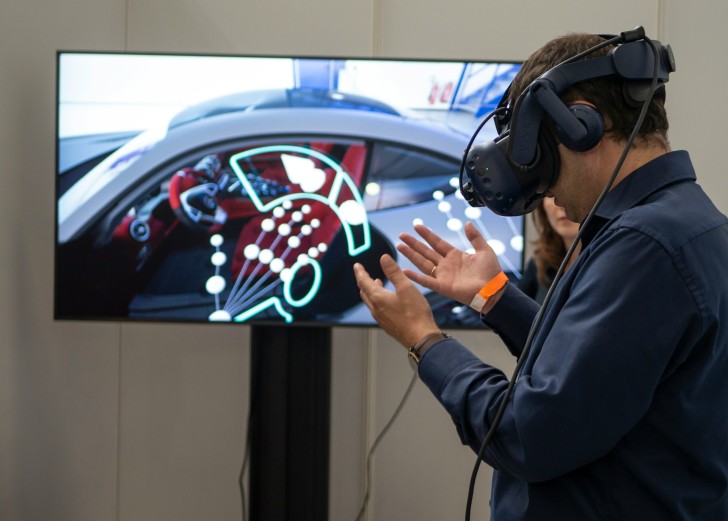- From Screens to Shared Adventures
- Core Advantages of VR/AR Interfaces
- Technical Challenges and Ongoing Solutions
- Professional and Educational Breakthroughs
- Consumer Experiences and Lifestyle Integration
- Community Rituals and Developer Engagement
- Barriers to Mainstream Adoption
- Looking Ahead: The Blended Future
- Conclusion
In recent years, VR and AR gadgets have moved beyond mere curiosities to reshape entertainment, education and even professional workflows. No longer confined to bulky headsets and grainy graphics, modern devices blend sleek design with sophisticated optics. Passionate developers continue refining both hardware and software — striving to erase the boundary between the physical world and digital imagination.
Just as gamers band together around a balloon casino game link to pursue loot and camaraderie, VR and AR users embark on collective explorations in virtual spaces. Early adopters slip on headsets or raise smart glasses, then witness their living rooms transform into alien landscapes or fantasy arenas. This social dimension echoes traditional multiplayer sessions, forging real‑time bonds that extend beyond text chat or voice comms.
Core Advantages of VR/AR Interfaces
Enthusiasts point to several compelling benefits that conventional displays cannot match:
- Spatial Presence — Users feel fully immersed, with 6DoF tracking and 3D audio creating the sense of actually being inside a scene.
- Contextual Augmentation — AR overlays enrich real environments, adding interactive labels, navigational cues or virtual characters anchored to physical objects.
These features deliver deeper engagement and improved retention, whether for gaming, training or collaborative design.
Technical Challenges and Ongoing Solutions
Despite rapid advances, VR/AR hardware still faces hurdles that shape its adoption curve:
- Motion Sickness — Latency between head movement and display updates can cause discomfort; higher refresh rates and predictive tracking help ease symptoms.
- Battery Constraints — High‑resolution visuals and onboard processing drain power quickly; innovations in low‑power chips and modular batteries are mitigating the issue.
- Field‑of‑View Limits — Early headsets offered narrow views; newer optics aim to expand peripheral coverage without distortion.
Addressing these challenges is an ongoing process, driven by both customer feedback and breakthroughs in materials science.
Professional and Educational Breakthroughs
Beyond gaming, VR/AR tools unlock transformative workflows. In healthcare, students practice intricate procedures on life‑size holograms before touching a real scalpel. Architects host virtual walkthroughs of unbuilt structures — clients stroll through digital renderings that respond to lighting and weather simulations. Field technicians wear AR glasses, streaming real‑time data overlays onto complex machinery. Such applications demonstrate how immersive tech can boost safety, efficiency and learning outcomes.
Consumer Experiences and Lifestyle Integration
As form factors shrink and designs refine, VR/AR gadgets are edging toward everyday wearables. Smart glasses now resemble conventional frames, offering glanceable notifications, language translation and turn‑by‑turn navigation. Fitness enthusiasts join virtual spin classes where instructors appear beside them. Travelers unlock guided tours that project historical reenactments onto ancient ruins. These use cases suggest a future in which digital layers coexist seamlessly with real life.
Community Rituals and Developer Engagement
Early adopters and creators form vibrant ecosystems around immersive tech. They gather in virtual meetups, sharing prototypes and swap design assets. Common rituals include:
- Weekly Demo Nights, where builders showcase new mods, environments or interaction schemes.
- Open Hackathons, inviting participants to prototype AR utilities for social causes or niche interests.
These gatherings fuel experimentation and mentorship, reminiscent of LAN parties but liberated from physical constraints.
Barriers to Mainstream Adoption
Despite excitement, several factors temper widespread uptake:
- Content Fragmentation — Diverse SDKs and proprietary file formats complicate cross‑device compatibility.
- High Price Points — Premium headsets and AR glasses can cost several times more than conventional gadgets.
- Privacy and Trust — Continuous environment scanning raises concerns about data collection and security.
Overcoming these barriers requires open standards, transparent policies and collaborative industry efforts.
Looking Ahead: The Blended Future
The trajectory of VR/AR gadgets points toward ever more natural interaction paradigms. Eye‑tracking promises hands‑free control, while emerging brain‑computer interfaces edge closer to thought‑driven navigation. Light‑field displays aim to render holographic depth without headgear. As hardware and software converge, the line between physical and digital will blur further — enabling experiences where users glide effortlessly from augmented overlays into fully immersive realms.
Conclusion
VR/AR gadgets represent a pivotal leap in how people engage with technology and each other. By harnessing spatial awareness, real‑time rendering and intuitive controls, these devices unlock fresh opportunities for storytelling, collaboration and productivity. While price, compatibility and privacy issues remain, the relentless pace of innovation suggests that the coming years will cement VR and AR as integral parts of daily life — truly elevating interaction to its next level.
 Peter Smith
Peter Smith

 Peter Smith
Peter Smith


